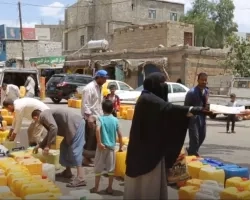An Analysis of the Capacity Building Program's Impact
Last year, 2019, was a big year for NASA’s Earth Applied Sciences Capacity Building Program. However, just viewing the raw data can make it hard to grasp the true scope of the program’s work. An image is worth a thousand words, but a chart can be worth a million.
Looking at a visual of the geographic reach of the program, engagement is spread almost evenly across all regions: the Americas, Europe, Africa and Asia/Oceania. However, there is a very minute pull towards more engagement in the Americas, even though Africa accounts for roughly 15% of total engagement. This is likely due to Africa being composed of the most countries of any continent, even though those countries have relatively low engagement.
In considering sector representation, the majority is composed of academic institutions from all around the world. In fact, only 29 out of the 158 countries impacted by the program had no representation from an academic institution. Government engagement accounts for less than half of all engagement, which is interesting considering recent efforts to invest in understanding the planet have been initiated via government policy and investment.
Combining geography and sector representation also provides an interesting picture of the program in 2019.
Unsurprisingly, the United States has the most organizations participating in program-related activities, followed by India, Colombia and Peru. In fact, seven (7) out of twelve South American countries are represented in the above chart, showing high levels of inter-American cooperation. North America, Western Europe and South East Asia are all prominently featured in this chart.
These graphics can also help identify gaps in the program’s global reach. Northern and Central Africa, as well as Melanesia and the Caribbean are under or unrepresented.
This year, 2020, despite the circumstances at the time of writing, is already looking to be another big year for the team. Usage and knowledge of Earth observations has been growing steadily for the past few years, and 2020 looks to continue that trend. While others look up at the stars, the Capacity Building Program seeks to use the view from above to help those down below.
About the Authors
Kylee Hartman-Caballero and Benjamin Hodgkins are summer interns for Applied Science’s Capacity Building Program. Kylee is a rising junior pursuing a degree in mathematics at the College of William and Mary. Ben is also a rising junior pursuing a degree in computer science at the University of Southern Maine.





